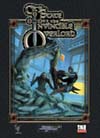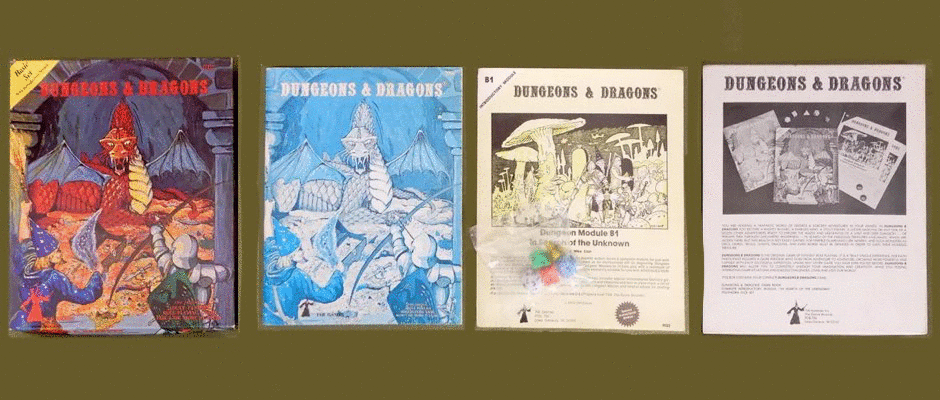

Cities. They’re one the most time-consuming, annoying and difficult elements a DM has to deal with in D&D. A village, a thorp, even a small town is more manageable because the D&D equivalent of GNP (GDP?) isn’t very high, unless it’s Shadowdale, home to Elminster. What the players can purchase is also limited and at times, more “logical”; no community of 200 people has Blackrazor or the Hand of Vecna for sale. Cities are a different problem altogether for DMs:
- Typical D&D campaigns are modeled after the Middle Ages so cities from then are nothing like their modern counterparts. Paris is over two million today compared to the 100,000 it probably never exceeded until the 1700s.
- Thanks to the Third Edition rules, magic items have “price tags.” Thus, many of the cheaper magic items should “easily” be for sale in the minds of the players whenever a city is encountered. Never mind that magic items also have XP costs and NPCs aren’t too keen on giving up their XPs since the PCs won’t in my campaign. Gold is lousy compensation for attaining the next level of power.
- Making the map of a city is difficult since historically they’re not laid out logically by planners, especially if they’ve been around for a few hundred years or more. Even the “younger” cities of the United State and Canada are haphazardly “designed.”
- Cities require more infrastructure and logistics for the DM to set up; a city watch/guard, various guilds, a more formal government, an organized criminal element, etc.
All the numerous D&D publishers have provided cities over the years but they’re all hit-or-miss propositions. Often they’re too campaign specific, especially the ones from WOTC. The book on Sharn is really for Eberron exclusively due to the magic, politics and races used. Waterdeep is also impractical outside of Forgotten Realms for similar reasons. The Sword & Sorcery alliance did produce several cities for their now defunct Scarred Lands series but they worked better as destinations for adventures because they weren’t “generic” enough. For example, unless you’re running a campaign of evil PCs,Hollowfaust: City of Necromancers isn’t a setting Paladins or other good-aligned types will tolerate as a base of operations or frequent stop.
I did get some pointers from my friend Lazz on how he did maps for WOTC. Yet time remains the biggest obstacle for me. (I still haven’t found his favorite reference book either.) At least I have a plan for my additional spare time should I end up unemployed soon.
Last year, Necromancer Games produced a 3.5 version of the infamous City State of the Invincible Overlord. This was originally published in the early years of D&D (late Seventies) by Judges Guild then revamped when licensed to Mayfair Games in the Eighties. Despite JG’s books containing disappointing art and poor paper stock (it was as thin as newspaper), many gamers were fond of it. I was more excited about the release of a “generic” city I could use in my campaign to solve all my DM woes mentioned above. Well, at least there’s a map and some logistics in CSiO. I think Necromancer had their hands tied by the guy who owns the rights to the JG materials. How? Most of it just has the original NPCs and monsters updated to 3.5 but there are huge gaps of logic such as why would a Chaotic Evil Bard and a Chaotic Good Bard work together running a business? I ended up shelving this with Sharn into my storage bin since it would take a substantial amount of time to rework into my campaign.
Bard’s Gate from Necromancer Games did finally appear on Dragon’s Lair’s shelves! This city was announced years ago on their web site but it was starting to look like vaporware with all the delays, namely the update to 3.5 being its biggest one. Thankfully it was worth the wait when compared to its competition. BG does have some campaign specific elements to the main author’s world; the deities, the geopolitical struggles the city is part of, annoying prestige/core classes, etc. But the overall city isn’t chained to these concepts like Sharn or Waterdeep so it can be dropped into most DM’s campaigns. (Now if I can only find the right river for it because it doesn’t work if I put it next to a sea or ocean.) What about the essentials of a city though? They’re present: guilds, including ones for prostitutes and beggars, a city watch, criminal elements, a bard college, tax rates, fees, punishments for certain crimes, etc. The major stuff is written out for the DM yet there are plenty of intentional gaps to be filled in; the web site supposedly has various merchants and taverns posted by fans, still haven’t found them.
The Bottom Line: If you’re running a home-brew campaign and you need a good, generic city, then I recommend Bard’s Gate with only this reservation; half of its 220 pages are spent on the Appendix of NPCs, magic items, Classes and the lands surrounding the city. Even though its magic level is on the low end for most D&D campaigns, it’s not a deal breaker and can be easily adjusted. I am looking forward to integrating it into my setting with Hollowfaust and Mithril. City State of the Invincible Overlord only has maps and ideas going for it which makes its $35 price feel like a rip off. Too much of it feels like a direct transfer to 3.5 without tweaking it to function in the spirit and mood of 3.5. For example, the alignments are all over the place with little explanation and I don’t recall there being a good mix of all the core, prestige and NPC classes. I only recommend this to DMs who remember the original and don’t want pay eBay prices for the JG or Mayfair versions. Other than laminating the city’s map, I think I will be selling this book.

I can’t speak to any ready-to-drop-into-your-campaign 3.5 city sourcebooks, but if you happen to just be looking for ideas and inspiration for a city based adventure (or campaign), I can recommend two excellent sources.
First is “Lankhmar, City of Adventure” which was a TSR 2nd Edition AD&D supplement. It details the city of Lankhmar, the base of operation for (early) fantasy literature’s two masters of skullduggery and derring-do: Fafhrd and the Gray Mouser, the creations of author Fritz Leiber. The supplement describes the various factions, guilds, temples of the city, as well as some of the notable political and criminal personalities. Unfortunately, NPCs are statted out using 2nd edition rules, but it is inspiring none the less. Certainly not as exaustive as City State of the Invincible Overlord, but well worth seeking out if you you want to get some ideas on how to make a medieval metropolis come alive.
My second suggestion is two modules for 1st edition Warhammer: “Middenheim – City of Adventure” and “Shadows Over Bogenhafen”. The city of Middenheim is a large mountaintop metropolis while Bogenhafen is a smaller, but still cosmopolitan, trading town that sits aside a great river. Yes, yes, its Warhammer: Dark, deadly, depressing, nigh unsurvivable. But hear me out. Both adventures go into great detail about the urban locations that they are set in. You can pitch the actual adventures themselves and just use the vast wealth of information provided on these two cities: trade guilds, NPC factions, military forces, physical layouts of the streets, etc. Good stuff. And the adventures themselves are quite good. “Shadows Over Bogenhafen” in particular was a big award winner back in the day — it won a European gaming award for Best (Ever) Fantasy Supplement, for example. Good stuff.